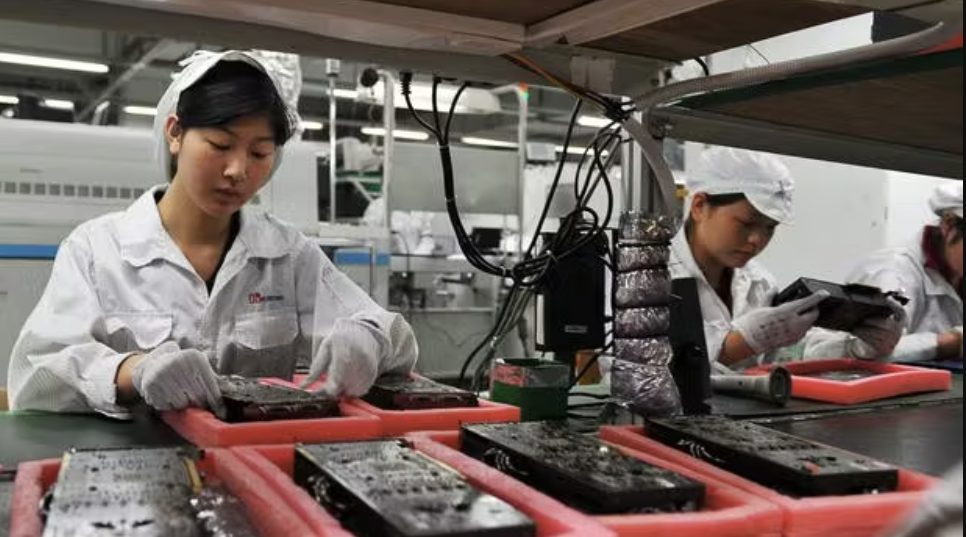How much money does China make from an iPhone? Surprisingly low number
- Tram Ho
iPhones are assembled in China. When an iPhone enters the US market, it is recorded as an export with an ex-works cost of about $240.
The iPhone import seems to be a big loss for the US. Because of this, former President Trump once stated: “China takes 500 billion dollars a year from our country and rebuilds China” . In 2018, one estimate showed that US imports of the iPhone 7 and iPhone 7 Plus contributed $15.7 billion to the 2017 trade deficit with China.
However, research by The Conversation on iPhone costs shows that this number does not reflect the actual value that China derives from iPhone exports, or from branded electronic goods that it does. Shipping to USA and other regions.
The most valuable components that make up the iPhone include: touch screen, memory chip, processor… They come from different suppliers in the US, Japan, Korea and Taiwan (China). Country). There are familiar names such as Intel, Sony, Samsung, Foxconn.

Image source: Sourci
Almost none of the components are made in mainland China. Apple buys components and ships them to China. The product when exported from mainland China to other markets is already a complete iPhone.
At the time the iPhone 7 was released in 2016, IHS Markit estimated the phone’s factory cost at $237.45.
Therefore, according to The Conversation’s estimates, the amount China gets from an iPhone 7 is only $8.46, or 3.6% of the factory cost. This rate includes the cost of a phone battery supplied by a Chinese company, and the cost of assembly labor.
So where did the remaining $228.99 go? The US and Japan received about 68 USD each, Taiwan received 48 USD and the remaining 17 USD went to South Korea.
After that, about $283 of profit from the retail price (the 32GB iPhone 7 model costs $649 at launch) will go directly to Apple’s “treasury”.
Meanwhile, according to the Wall Street Journal, for every 64 GB iPhone X sold for $ 999, Samsung Corporation – the unit that makes the screen for the iPhone – will receive $ 110.
The next $44.45 is for iPhone memory chip suppliers, including Toshiba (Japan) and SK Hynix (Korea).
Part of the next money will go to Singapore, part to Brazil, part to Italy, China still only receives about 8.46 USD for each iPhone X sold.

Image source: Forbes
While iPhones are counted as imports from China, most of the money Americans spend on them doesn’t go to China.
Up to the iPhone 14, according to Nikkei Asia, iPhone production costs have reached an “all-time high”. The production cost of the iPhone 14 Pro Max is estimated at $501, higher than the $461 cost for the iPhone 13 Pro Max.
However, the reason for this increase is due to the increase in the price of components. The most expensive component is the A16 Bionic chip that costs $110. The new model Sony CMOS sensor costs $15, which is 50% more expensive than the old model. The OLED screen for the iPhone 14 Pro Max is also much more expensive because it uses more premium materials.
Why not make iPhones in the US?
“Why can’t Apple make iPhones in the US?” This is a question many people ask. The main problem is that the production chain of the global electronics industry has shifted to Asia in the 1980s and 1990s. Companies like Apple must also face this reality.
Besides, according to the calculation above, the US economy, as well as its workforce, will not gain much value if only assembling iPhones from parts made in Asia.
While it’s technically possible to assemble an iPhone in the US, the cost per iPhone will be higher than if it were assembled in Asia.

Image source: CNN
According to Vox, if Apple assembles the iPhone in the US, it will cost them about 30-40 dollars more per phone. In the case where every part is made in the US but raw materials are still purchased from the global market, an iPhone will cost about $100 more.
For an electronic device with a profit margin of 64%, this is a relatively modest cost increase. The main problem, however, is the scale, expertise and infrastructure to assemble the iPhone – all of which require money, time and a long-term investment.
Even if Apple could centralize the entire iPhone production process in the US, it would not have many advantages in terms of costs and in terms of global trade. Meanwhile, China is willing to accept 8 USD for each phone, so Apple is not guilty of accepting a disadvantage.
Strategy “China + 1”
Although it has been attached and dependent for a long time on the iPhone assembly system in China, in the context of increasing geopolitical tensions and after the impacts of the COVID-19 pandemic on the global supply chain, Apple is look to India as a potential alternative.
According to Professor Willy Shih at Harvard Business School, although it still has to depend on China, Apple is implementing a strategy of “China + 1” or “China + more than 1” to diversify its supply base.
India, Asia’s third largest economy, offers a developed domestic market. In addition, the New Delhi government has introduced many policies to attract investment in the smartphone manufacturing sector.
However, moving production lines out of China will cause Apple to face many challenges. Experts say that “Apples” can diversify the supply chain, but it is difficult to completely abandon production in China.
Source : Genk
